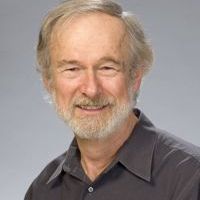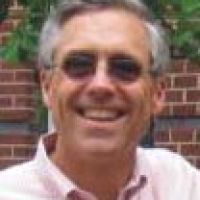3. Mobilization, Transport, and Depositional Controls on Carbon-Mineral Supply, Mixing, and Burial.
Q3.1: What are the dominant water and DOC source areas, flowpaths, and residence times (transit times) across CZO watersheds and stream networks?
Q3.2. How does surface/subsurface water exchange influence the movement of DOC at different scales and in different environments?
Q3.3. What are the transport pathways and residence times of mineral-carbon complexes as they move through the Piedmont uplands, the tidally influenced Coastal Plain, and the estuary?
-
The goal of Objective 3 is to understand how carbon cycling at the watershed scale is influenced by lateral transport of water, sediment, and carbon across geophysical boundaries: from hillslopes through river valley networks to estuarine depocenters.
Q3.1: What are the dominant water and DOC source areas, flowpaths, and residence times (transit times) across CZO watersheds and stream networks?
H3.1: Dominant source areas and flow paths of water and DOC are spatially and vertically heterogeneous and shift from deeper alluvial groundwater to surface sources and processes with increasing wetness and storm event size/duration, with a concomitant reduction in residence times.Q3.2. How does surface/subsurface water exchange influence the movement of DOC at different scales and in different environments?
H3.2. Surface water–GW exchange modifies the form, magnitude, and timing of watershed DOC fluxes, which are non-additive across different spatial scales due to the influence of geomorphic dispersion and in-stream biogeochemical processes that modify the form, magnitude, and timing of watershed fluxes.Q3.3. What are the transport pathways and residence times of mineral-carbon complexes as they move through the Piedmont uplands, the tidally influenced Coastal Plain, and the estuary?
H3.3 . Mineral-carbon complexes transported through river catchments from saprolite to sea, periodically cycle between freshwater aquatic and floodplain environments before entering estuarine depocenters. Mineral-carbon complex transit times and transport distances in the Piedmont uplands are event-driven and related to the velocity of water flow during storm events. With downstream direction and longer distances particle storage becomes increasingly certain, time-averaged velocities of downstream transport are dominated by storage transit times and movement during events becomes increasingly irrelevant. -
Contacts
-
Christina, INVESTIGATOR
-
Christina, INVESTIGATOR
7 People
INVESTIGATOR
.(JavaScript must be enabled to view this email address)
Univ. of Exeter
Geomorphology; sediment fingerprinting, dating and stratigraphy
INVESTIGATOR
.(JavaScript must be enabled to view this email address), 610.268.2153 x 263
Stroud Water Res. Ctr.
Univ. Delaware
Carbon-mineral complexation, transport and fate
INVESTIGATOR
, 610.268.2153 x280
Stroud Water Res. Ctr.
Environmental Microbiology
Cross-CZO INVESTIGATOR
.(JavaScript must be enabled to view this email address), 612.624.3400
Univ. of Minnesota
Univ. Delaware
Stroud Water Res. Ctr.
Hydrology and biogeochemistry
INVESTIGATOR
.(JavaScript must be enabled to view this email address), 610.268.2153 x227
Stroud Water Res. Ctr.
Sediment transport; hydrological modeling and data synthesis
GRAD STUDENT
.(JavaScript must be enabled to view this email address)
Univ. Delaware
Geomorphology
.(JavaScript must be enabled to view this email address), 302.831.2710
Univ. Delaware
Watershed geomorphology and sediment budgets
-
-
Featured Publications
2011
Riverine coupling of biogeochemical cycles between land, oceans, and atmosphere. Aufdenkampe, A. K., Mayorga, E., Raymond, P. A., Melack, J. M., Doney, S. C., Alin, S. R., Aalto, R. E., and Yoo, K. (2011): Frontiers in Ecology and the Environment 9:53-60.
Explore Further







